The following is a free version of a Zero Pivot Problem Solving report to give you a taste for the kind of research our paid subscribers receive. Compare the price to the entry fees required by Gartner and let me know what you think. Why budget 5-figures (just to start!) annually for information you can get for pennies?
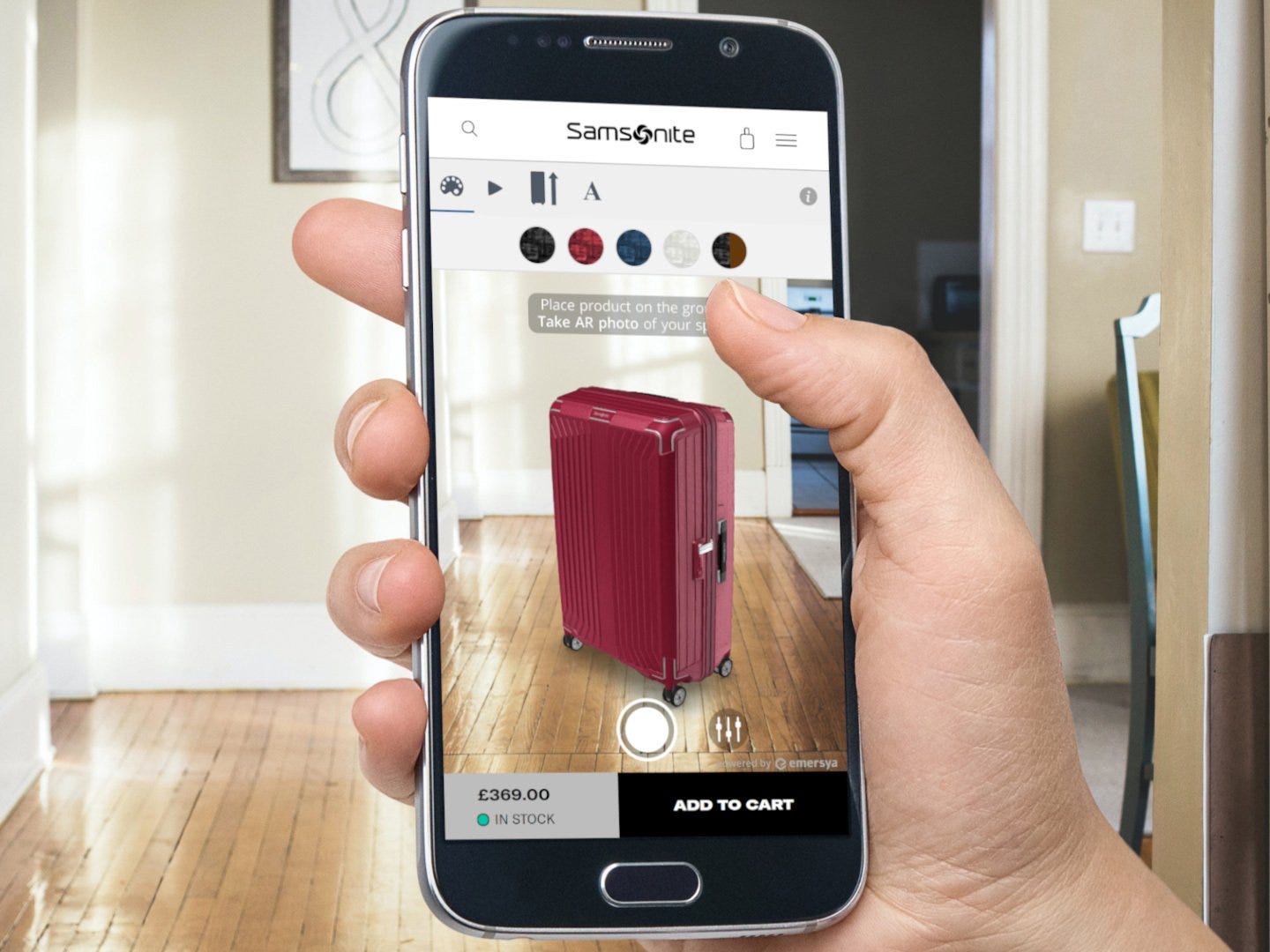
Executive Summary
Guided selling techniques enhanced by Configure, Price, Quote (CPQ) technology have undergone a remarkable transformation between 2020 and 2025. What began as basic configuration tools has evolved into sophisticated, AI-powered systems that orchestrate the entire sales process across multiple channels.
This analysis examines how these technologies have fundamentally changed traditional sales approaches, creating more personalized, efficient, and accurate customer experiences. The integration of artificial intelligence, machine learning, augmented reality, and natural language processing has dramatically enhanced CPQ capabilities, enabling more sophisticated guided selling experiences that adapt to customer needs in real-time.
The global CPQ market continues its explosive growth trajectory, with projections indicating it will reach approximately $7 billion by 2030, growing at an impressive CAGR of 17-20% from 2024 to 2030. This growth reflects fundamental shifts in buyer behavior, with 83% of B2B buyers now preferring to order through digital commerce channels and 71% willing to spend over $50,000 in a single online self-service transaction.
Key findings from this analysis include:
AI-Driven Transformation: CPQ has evolved from rules-based to AI-driven approaches, with machine learning now embedded within applications rather than functioning as an add-on feature.
Self-Service and Omnichannel Expansion: Modern buyers expect seamless control over purchasing decisions, driving the development of robust digital sales channels and hybrid selling approaches.
Advanced Visualization Integration: CPQ platforms now offer immersive 3D product visualization and AR functionality, allowing customers to see exactly what they're configuring in real-time.
Measurable Business Impact: Organizations implementing guided selling through CPQ report significant business outcomes, including 105% larger deals, 10x faster quote generation, and over 500% return on investment.
Industry Specialization: The CPQ market has seen increasing specialization, with vendors developing solutions tailored to the unique requirements of manufacturing, healthcare, telecommunications, and other sectors.
The future of guided selling with CPQ promises even deeper integration of AI, immersive visualization technologies, and conversational interfaces. Organizations that successfully implement these solutions can achieve significant improvements in sales efficiency, customer experience, and business outcomes.
Evolution of Guided Selling and CPQ (2020-2025)
The past five years have witnessed a fundamental transformation in guided selling methodologies, driven by technological advancements in CPQ platforms. This evolution has been characterized by increasing automation, personalization, and self-service capabilities, fundamentally changing how buyers and sellers interact.
From Rules-Based to AI-Driven Approaches
Traditional CPQ systems relied heavily on predefined rules and decision trees to guide users through product configuration and pricing. While effective for basic scenarios, these systems often struggled with complex configurations and lacked the flexibility to adapt to changing market conditions.
Since 2020, CPQ technology has undergone a profound transformation, with AI becoming deeply embedded within applications rather than functioning as an add-on feature. As iQuoteXpress noted in September 2024, "AI isn't 'added' to CPQ, nor does it operate outside the app. It's embedded with AI-powered CPQ applications leveraging machine learning algorithms to automate various aspects of the quoting process."
This integration of AI has enabled CPQ systems to analyze vast datasets of pricing and product configurations, identify patterns, and make intelligent recommendations. By 2025, leading CPQ platforms can now leverage machine learning to provide personalized product recommendations, optimize pricing strategies, and automate complex configuration processes.
The Rise of Self-Service and Omnichannel Capabilities
Another significant evolution in guided selling with CPQ has been the dramatic expansion of self-service and omnichannel capabilities. As PROS highlighted in their 2025 trends report, "Leading companies are moving from zero self-service capabilities to processing most quotes with no human intervention."
This shift reflects changing buyer preferences, with modern B2B buyers expecting seamless control over their purchasing decisions. According to Sirocco Group, "Modern buyers expect seamless control over their purchasing decisions, and self-service CPQ tools are designed to meet this growing demand. These platforms empower customers to personalise products, access accurate pricing in real-time, and complete purchases without relying on sales representatives."
The COVID-19 pandemic accelerated this trend, pushing organizations to develop robust digital sales channels. By 2025, hybrid selling—combining digital self-service with human-assisted sales—has become the dominant B2B sales strategy. As PROS noted, "Hybrid selling is set to become a dominant B2B sales strategy, and CPQ facilitates this approach by bridging the gap between direct sales and eCommerce, providing customers with an easy, accurate, and consistent buying experience across sales channels."
Integration of Advanced Visualization Technologies
The period from 2020 to 2025 has also seen the integration of advanced visualization technologies into CPQ platforms. According to servicePath, "Modern CPQ platforms now offer immersive 3D product visualization and even AR functionality, allowing customers to see exactly what they're configuring in real-time."
These visualization capabilities have transformed how customers interact with complex products during the configuration process. Rather than relying on static images or textual descriptions, customers can now view 3D models of configured products, rotate them to examine from different angles, and even use augmented reality to place virtual products in their real-world environment.
As KBMax explained, "Augmented reality (AR) technology takes 3D product visualization and configuration to another level. With AR, customers can visualize products in their real-world environment, which creates a more captivating and persuasive experience."
Evolution of Compliance and Governance Features
Between 2020 and 2025, CPQ systems have also evolved to incorporate more sophisticated compliance and governance features. According to Sirocco Group, "Compliance is an increasingly significant aspect of the sales process, particularly as businesses navigate evolving regulations across multiple regions. From tax laws and data privacy requirements to industry-specific mandates, ensuring that every proposal meets these standards is essential to protecting both businesses and customers."
Modern CPQ systems now automate compliance checks at every step of the configuration and quoting process, ensuring that all quotes adhere to relevant regulations, internal policies, and contractual obligations. This automation has significantly reduced the risk of non-compliance while streamlining the approval process.
Guided Selling Frameworks Enhanced by CPQ
Effective guided selling through CPQ relies on structured frameworks that systematically lead customers and sales representatives through the configuration and quoting process. These frameworks have evolved from simple linear approaches to sophisticated, AI-driven methodologies that adapt to customer needs in real-time.
Prescriptive Selling Framework
The prescriptive selling framework has emerged as one of the most effective approaches for guided selling with CPQ technology. This framework uses data-driven insights to guide sales representatives through a structured sales process, providing specific recommendations at each stage.
Modern CPQ platforms enhance prescriptive selling by incorporating AI-powered recommendation engines that analyze customer data, purchase history, and market trends to suggest optimal product configurations and pricing strategies. As Simplus noted, "Complicated sales processes can be reduced into logical solution development paths using CPQ guided selling, product and pricing rules, and other features. These allow even newer sales reps to build and deliver quotes that are commercially (protect your margin) and technically (deliver the product) viable without having to validate their proposals or request assistance, even when complex."
The prescriptive selling framework typically includes several key components:
Needs Assessment: Using structured questions to identify customer requirements
Solution Configuration: Automatically configuring products based on identified needs
Value Demonstration: Highlighting benefits specific to the customer's situation
Pricing Optimization: Suggesting optimal pricing based on market conditions and customer value
Proposal Generation: Creating personalized proposals that address specific customer needs

Solution Selling Framework
The solution selling framework focuses on addressing customer problems rather than simply selling products. CPQ technology enhances this approach by helping sales representatives identify customer challenges and configure appropriate solutions.
As Simplus observed, "By automatically adding or recommending complementary products at the point of quoting ('solution selling'), customers are more likely to increase the overall value of their order." This capability enables sales representatives to move beyond transactional selling to a more consultative approach that addresses broader customer needs.
Modern CPQ systems support solution selling by:
Problem Identification: Using guided questions to uncover customer challenges
Solution Mapping: Automatically mapping products and services to identified problems
Value Articulation: Quantifying the value of proposed solutions
Cross-Selling: Suggesting complementary products that enhance the overall solution
ROI Calculation: Providing clear return on investment projections
Consultative Selling Framework
The consultative selling framework positions sales representatives as trusted advisors who help customers make informed decisions. CPQ technology enhances this approach by providing sales representatives with the tools and information they need to deliver expert guidance.
According to NetSuite, "Modern CPQ software often includes guided selling features that help sales representatives navigate complex product configurations and pricing scenarios without slowing down the sales process. These features walk users through a series of questions to determine the best product combinations for addressing customer needs and offer opportunities for potential upselling or cross-selling."
Key elements of the consultative selling framework enhanced by CPQ include:
Discovery Process: Structured questioning to understand customer objectives
Education: Providing relevant information about products and solutions
Personalized Recommendations: Tailoring suggestions based on customer needs
Transparent Pricing: Clearly explaining pricing structure and options
Collaborative Configuration: Working with customers to refine solutions
Industry-Specific Guided Selling Frameworks
As CPQ technology has matured, industry-specific guided selling frameworks have emerged to address the unique requirements of different sectors. According to servicePath, "Businesses across industries are recognizing that generic, one-size-fits-all quoting solutions simply don't cut it anymore."
For example, in healthcare, Salesforce CPQ has been adapted to support value-based care models. As Mirketa noted, "With the shift toward value-based care, healthcare providers need to demonstrate that their offerings provide measurable outcomes. Salesforce CPQ enables providers to tailor pricing around patient-centered care and helps them deliver value-added services."
Similarly, in telecommunications, Industries CPQ has developed specialized frameworks that address the unique challenges of configuring complex service bundles. According to Salesforce Trailhead, "Industries CPQ uses a shared catalog to give Infiwave a single source of truth for all its offers, products, services, and their prices. It holds eligibility, qualification, availability, and pricing rules for each offer to ensure that products are correctly configured, compatible, and deliverable at the right price for each customer."
Integration Capabilities with Other Business Systems
The true power of CPQ-enhanced guided selling emerges through seamless integration with other critical business systems. Modern CPQ solutions have evolved from standalone applications to central hubs that orchestrate data flow between CRM, ERP, e-commerce platforms, and other systems.
CRM Integration
Integration between CPQ and Customer Relationship Management (CRM) systems has become increasingly sophisticated since 2020. Modern CPQ solutions now offer deep, bidirectional integration with leading CRM platforms like Salesforce, Microsoft Dynamics 365, and others.
According to PROS, "One of the most important trends today is to integrate it all—CRMs, ERPs, customer-facing portals, and eCommerce platforms—to provide smarter decision-making capabilities and a unified experience for customers, partners, and sales teams."
This integration enables sales representatives to access comprehensive customer information during the configuration and quoting process, including:
Complete customer profile and contact information
Purchase history and previous configurations
Open opportunities and pipeline status
Customer-specific pricing agreements and discounts
Communication history and interaction logs
As the IDC MarketScape report highlighted, "Deep integration with CRM systems like Microsoft Dynamics 365 is becoming a key differentiator for CPQ vendors." This integration allows for a seamless flow of information between lead generation, opportunity management, and quote creation processes.

ERP Integration
Integration between CPQ and Enterprise Resource Planning (ERP) systems has also evolved significantly, enabling more accurate pricing, inventory management, and order fulfillment. According to Nucleus Research, "Advanced CPQ platforms now integrate deeper with CRM and ERP systems, enabling real-time data access and streamlined operations."
This integration provides several key benefits:
Real-time access to inventory availability and lead times
Accurate cost information for margin calculations
Automated order processing and fulfillment
Synchronized product and pricing information
Streamlined billing and revenue recognition
As CPQ Integrations noted, "Integration ensures that pricing, quoting, billing, and invoicing data are always accurate and up-to-date, creating a seamless flow of information across departments."
E-commerce Platform Integration
The integration between CPQ and e-commerce platforms has become increasingly important as more B2B sales move online. According to Gartner, "By 2025, 80% of B2B sales interactions between suppliers and buyers will occur in digital channels, fundamentally transforming traditional sales models."
Modern CPQ solutions now offer robust integration with e-commerce platforms, enabling consistent product configuration and pricing across all sales channels. This integration supports the growing trend toward hybrid selling models that combine self-service e-commerce with assisted sales.
As PROS observed in their case study, "Online buyers are guided through every stage of their projects. They can page through the catalog aided by intuitive navigation and rich media, view areas of interest (such as 'rustic' or 'insulation'), have their questions answered, and browse complementary (cross-selling) or up-market (upselling) options."
Omnichannel Integration
The concept of omnichannel integration has evolved beyond simple multi-channel support to create truly seamless experiences across all customer touchpoints. According to Zaelab, "In B2B manufacturing, the adoption of a seamless and customer-centric Configure, Price, Quote (CPQ) experience is no longer a choice - it's a necessity. The shift towards an Omnichannel CPQ - a comprehensive approach that integrates CPQ processes across all sales and distribution channels to provide a seamless and consistent experience for customers - is a game-changer."
Modern CPQ solutions now support sophisticated omnichannel capabilities, including:
Consistent product configuration across all channels
Synchronized pricing and promotions
Ability to start a quote in one channel and complete it in another
Unified customer view across all touchpoints
Channel-specific presentation of products and services
As Logik.io explained, "Omni-channel references the different methods by which a purchase or manufacturing order can be made – through a self-serve website, a direct interaction with a sales representative, a hybrid guided selling experience, etc. – and the consistency in customer experience across those channels."
API Ecosystems and Microservices
The technical architecture of CPQ integration has evolved toward API-based ecosystems and microservices, enabling more flexible and scalable integration capabilities. According to the IDC MarketScape report, "The market is trending towards modular and microservices-based architectures that support complex configurations, dynamic pricing, and improved self-service capabilities."
This architectural approach allows organizations to create custom integration frameworks that connect CPQ with a wide range of systems and services. It also enables more agile development and deployment of new capabilities without disrupting existing integrations.
As CPQ.se noted, "Implementing an omnichannel strategy is akin to orchestrating a symphony – every note must be in harmony. However, technical issues such as data synchronization, system compatibility, and ensuring real-time updates can easily disrupt this harmony." Modern API-based integration helps address these challenges by providing standardized interfaces for data exchange and process coordination.
AI and Machine Learning Components
Artificial intelligence and machine learning have fundamentally transformed CPQ-enhanced guided selling, moving from basic automation to sophisticated systems capable of predictive analytics, personalized recommendations, and autonomous decision-making.
AI-Powered Product Configuration
AI has revolutionized product configuration within CPQ systems, enabling more intelligent and personalized configuration experiences. According to Infogain, "AI-enabled CPQ solutions are transforming product configuration by leveraging customer preferences, buying patterns, and historical data to deliver personalized recommendations."
Modern CPQ systems use machine learning algorithms to analyze past configurations, customer preferences, and usage patterns to suggest optimal product configurations. This capability helps sales representatives and customers navigate complex product catalogs more efficiently and reduces the risk of configuration errors.
As Slalom Salesforce described in their blog, "Your sales reps enter customer requirements into a GenAI prompt. GenAI uses past data and market trends to suggest suitable configurations for your customers. Sales reps review and adjust these suggestions based on customer interactions and then confirm the quote."
Predictive Pricing and Optimization
AI and machine learning have transformed pricing strategies within CPQ systems, enabling more sophisticated and dynamic approaches. According to iQuoteXpress, "AI can help determine optimal pricing strategies by analyzing market trends, competitor pricing, and customer preferences. This ensures that quotes are competitive while maximizing profitability."
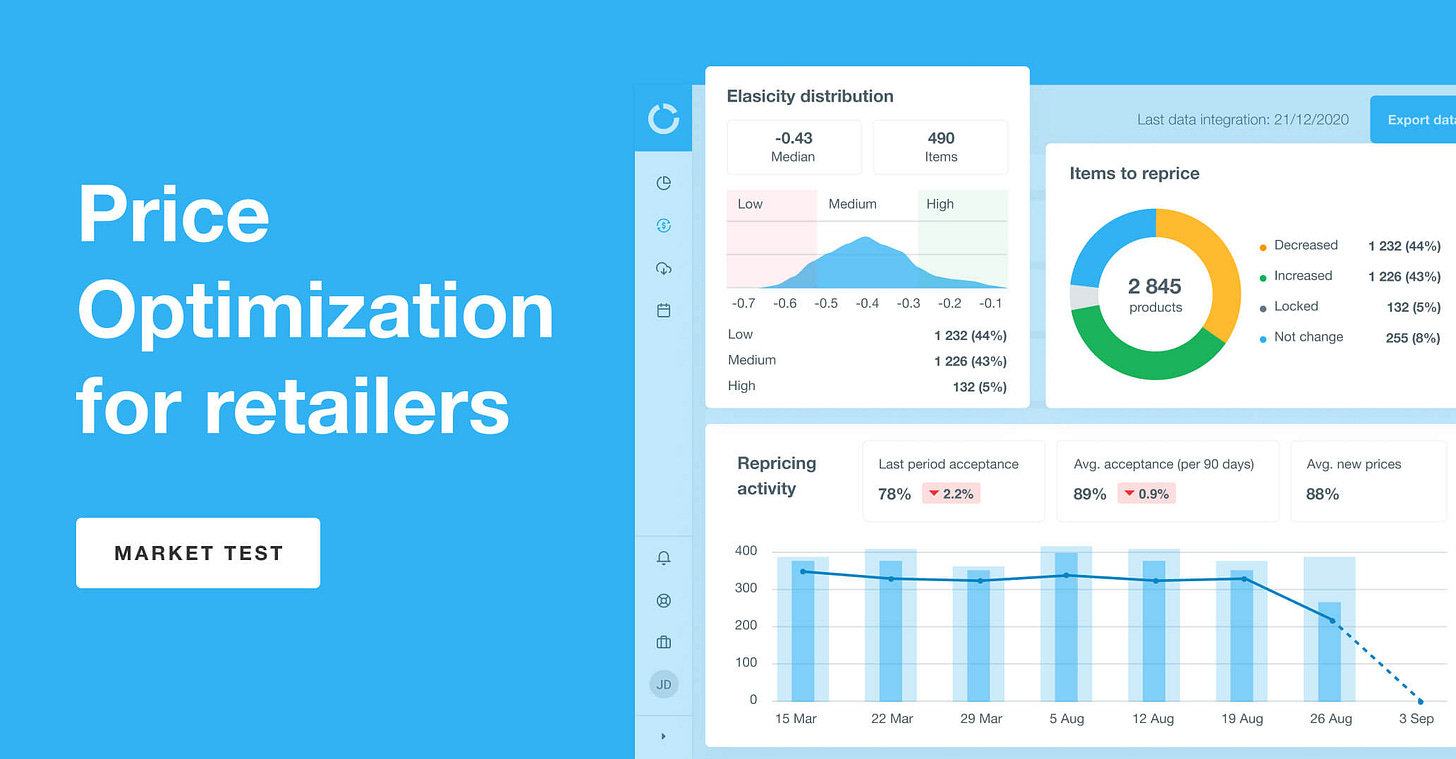
Modern CPQ systems now incorporate predictive pricing models that can:
Analyze historical pricing data to identify optimal price points
Segment customers based on willingness to pay
Adjust pricing based on market conditions and competitive dynamics
Optimize discounting strategies to maximize revenue and margin
Identify cross-selling and upselling opportunities
As Vloxq noted, "AI can analyze vast amounts of data to identify patterns and trends, allowing businesses to optimize their pricing strategies in real time."
Natural Language Processing for Guided Selling
Natural language processing (NLP) has emerged as a powerful component of modern CPQ systems, enabling more intuitive and conversational guided selling experiences. According to Epicor, "Natural language processing (NLP) is the domain of AI that deals with text and language. It underpins the large language models (LLM) that enable chatbots like OpenAI's ChatGPT, Google's Gemini, and Anthropic's Claude."
This technology allows sales representatives and customers to interact with CPQ systems using natural language rather than navigating complex menus and forms. As Expedite Commerce explained, "Sales reps can leverage Expedite AI to choose products individually, in bulk, or via natural language commands. Use conversational prompts to simplify complex configurations, quickly find and add the right products to customer quotes."
The capabilities of NLP in CPQ systems have advanced significantly, with modern systems achieving up to 98% accuracy in language understanding and translation. This enables more natural and efficient interactions, particularly for complex product configurations.
Machine Learning for Customer Segmentation
Machine learning algorithms have enhanced customer segmentation capabilities within CPQ systems, enabling more targeted and personalized guided selling approaches. These algorithms analyze customer data, purchase history, and behavior patterns to identify distinct customer segments with similar needs and preferences.
This segmentation allows sales representatives to tailor their approach based on the specific characteristics of each customer segment. It also enables CPQ systems to provide segment-specific product recommendations, pricing strategies, and promotional offers.
As iQuoteXpress noted, "AI-powered CPQ can provide granular customer segmentation based on demographics, purchasing behavior, and preferences." This capability helps sales representatives understand customer needs more deeply and deliver more relevant and compelling proposals.
Generative AI for Configuration and Design
Generative AI represents one of the most significant advancements in CPQ technology in recent years. According to Epicor, "Generative design is a revolutionary approach that harnesses the power of AI to explore a vast array of design possibilities. The process starts with users defining design goals, constraints, and parameters."
This technology enables CPQ systems to automatically generate multiple design variations based on specified requirements and constraints. It can explore thousands of possible configurations to identify optimal solutions that meet customer needs while adhering to manufacturing constraints and cost targets.
As Infogain highlighted, "Generative AI is being applied to complex deal pricing strategies in diverse market contexts." This capability is particularly valuable for industries with complex, customizable products, such as manufacturing, construction, and engineering.
Computer Vision for Product Visualization
Computer vision technology has enhanced product visualization capabilities within CPQ systems, enabling more immersive and interactive configuration experiences. This technology allows customers to see realistic representations of configured products, often in 3D or augmented reality.
According to KBMax, "AR-enabled CPQ can automatically validate product fit by detecting surfaces, measuring spaces, and understanding spatial relationships." This capability is particularly valuable for products where size, fit, and spatial relationships are important considerations.
As KBMax further explained, "Customers are increasingly leveraging these capabilities independently. Rather than waiting for sales representatives to conduct site surveys, buyers can point their mobile device in the right direction to validate configurations in minutes. They can walk around virtual products, examine them from any angle, and even simulate operation in their intended location."
Conversational AI for Quote Generation
Conversational AI has transformed quote generation within CPQ systems, enabling more interactive and user-friendly experiences. According to GlobeNewswire, "DealDesk AI represents a significant advancement in conversational AI for CPQ, allowing sales teams to create quotes using natural language processing."
This technology enables sales representatives to generate quotes through natural language interactions rather than navigating complex forms and menus. As GlobeNewswire reported, "Sales representatives shouldn't need to become CPQ experts to create accurate quotes. DealDesk AI fundamentally changes this paradigm by bringing conversational intelligence to quote creation and deal management. Now teams can simply describe what they need in conversational language and our AI handles the complexity behind the scenes, allowing sales and finance professionals to work smarter and close deals faster than ever before."
The integration of conversational AI with CPQ systems also supports more efficient collaboration between sales teams and customers. As GlobeNewswire noted, DealDesk AI includes features such as "Conversational Quote Creation, AI-Powered Guided Selling, Slack Integration, AI-Powered Summarization, 24/7 Deal Guidance, and Intelligent Sales Rooms."
Business Outcomes and ROI Metrics
Organizations implementing guided selling through CPQ technology are achieving measurable business outcomes across multiple dimensions, from sales efficiency and revenue growth to improved customer experience and operational effectiveness.
Sales Efficiency Improvements
One of the most significant business outcomes of implementing guided selling through CPQ is improved sales efficiency. According to CPQ Integrations, "Sales reps typically spend only 28-36% of their time actually selling, with CPQ helping to automate administrative tasks."
This efficiency improvement stems from several factors:
Automated quote generation and approval processes
Streamlined product configuration workflows
Reduced time spent on administrative tasks
Faster onboarding for new sales representatives
Decreased reliance on technical specialists for complex configurations
As CPQ Integrations reported, "Businesses can generate quotes 10 times faster and reduce approval times by 95% after CPQ implementation." Similarly, Whatfix noted that "Salesforce reports that implementing its CRM platform can boost win rates by 26% and sales revenue by 28%."
These efficiency gains translate directly to increased selling time and higher productivity for sales teams. As NetSuite observed, "A 2023 analysis of more than 5,000 public companies by McKinsey found that 'growth champions'—those that profitably outgrew their peers over a 10-year period—were able to increase their sales productivity by as much as 30% by using automation to increases sales teams' effectiveness."
Revenue Growth and Deal Size Increases
Organizations implementing guided selling through CPQ have reported significant revenue growth and increases in average deal size. According to CPQ Integrations, "Deals are 105% larger when a company uses CPQ, indicating significant revenue enhancement potential."
This revenue growth stems from several factors:
More effective cross-selling and upselling
Optimized pricing strategies
Reduced discounting through value-based selling
Faster sales cycles leading to higher win rates
Improved ability to handle complex product configurations
As Sirocco Group reported, "AI-powered CPQ systems are delivering measurable business improvements, with reported reductions of 10-15% in sales cycle times and potential deal size increases of up to 20%."
The ability to configure complex products accurately and provide optimal pricing recommendations has proven particularly valuable for increasing deal sizes. As Simplus noted, "By automatically adding or recommending complementary products at the point of quoting ('solution selling'), customers are more likely to increase the overall value of their order."
Return on Investment Metrics
Organizations implementing guided selling through CPQ have reported impressive return on investment metrics. According to CPQ Integrations, "CPQ provides an average return of $6.22 for every $1 invested, representing over a 500% return on investment."
This ROI stems from multiple sources:
Increased revenue through larger deal sizes and higher win rates
Reduced costs through automation and efficiency improvements
Decreased error rates leading to fewer order corrections
Improved cash flow through faster quote-to-cash cycles
Enhanced customer retention through better buying experiences
As Bluvium reported in a case study, "A leading technology company integrated Salesforce CPQ and Billing with their existing enterprise systems to reduce quote-to-cash time by 50%, resulting in millions of dollars in additional revenue."
The ROI of CPQ implementations can be measured through various metrics, including:
Percentage increase in average deal size
Reduction in quote generation time
Decrease in quote error rates
Improvement in sales rep productivity
Increase in customer satisfaction scores
Error Reduction and Quality Improvements
Guided selling through CPQ has demonstrated significant benefits in reducing errors and improving quote quality. According to Whatfix, Salesforce CPQ "produces 27% fewer invoicing errors."
This error reduction stems from several factors:
Automated validation of product configurations
Built-in pricing rules and approval workflows
Standardized quote templates and formats
Integrated compliance checks
Reduced manual data entry
As Sirocco Group noted, "Modern CPQ solutions are integrating compliance checks automatically, with some users reporting up to a 90% decrease in quoting inaccuracies."
The quality improvements extend beyond simple error reduction to include more accurate product configurations, better alignment with customer needs, and more professional proposal documents. As NetSuite explained, "CPQ software aids businesses in handling three primary tasks: configuring complex product offerings, determining accurate pricing, and generating professional sales quotes. This software is typically integrated with existing customer relationship management (CRM) or enterprise resource planning (ERP) systems to help sales teams reduce errors, speed up their quoting process, and close deals faster."
Customer Experience Enhancements
Guided selling through CPQ has demonstrated significant benefits for customer experience. According to PROS, "With significant advances in just the last few years, CPQ has become the go-to technology for businesses to modernize their sales processes—reducing errors, accelerating sales cycle, and enhancing the customer experience with quick, personalized quotes."
These customer experience enhancements stem from several factors:
More personalized product recommendations
Faster quote generation and response times
Greater transparency in pricing and configuration options
Self-service capabilities for simple configurations
More professional and consistent proposals
As Zaelab noted, "Manufacturing buyers are demanding exceptional and faster user experiences. Configure complex products simply and in real-time using 3D or augmented reality to help buyers visualize their purchase without technology limitations. Product visualization enables buyers to see their configurations, reduce ambiguity, and expedite the sales process."
The improvement in customer experience often translates to higher customer satisfaction, increased loyalty, and greater willingness to recommend the company to others. As servicePath observed, "AR is redefining how customers engage with products in CPQ systems. By enabling the visualization and interaction with 3D models, AR is enhancing customer satisfaction and minimizing post-purchase regret."
Operational Efficiency Beyond Sales
The benefits of guided selling through CPQ extend beyond the sales department to improve operational efficiency across the organization. According to PROS, "Companies are reducing quote and configuration times dramatically - for example, Manitou Group reduced order configuration from 30 days to a few hours."
These operational improvements affect multiple departments:
Manufacturing: More accurate product specifications leading to fewer production errors
Engineering: Reduced need for custom design work through standardized configuration options
Finance: Streamlined approval processes and more accurate revenue forecasting
Legal: Automated contract generation with standardized terms and conditions
Customer Service: Better visibility into customer configurations and order status
As PROS reported in their case study, "Smart CPQ automatically transfers all order information from the point of sale to Lapeyre's ERP system for fulfillment and sends engineering data for custom products to the factory for manufacturing."
The operational benefits often include reduced lead times, improved inventory management, and better resource allocation. As Epicor noted, "Advanced visual CPQ can reduce lead times by up to 50% and automate complex configuration processes."
Industry-Specific Applications and Case Studies
CPQ-enhanced guided selling has been successfully implemented across diverse industries, with each sector adapting the technology to address unique challenges and requirements.
Manufacturing Sector Implementations
The manufacturing sector has been at the forefront of adopting guided selling through CPQ, particularly for complex, configurable products. According to servicePath, "Modern CPQ platforms now offer immersive 3D product visualization and even AR functionality, allowing customers to see exactly what they're configuring in real-time."
Manufacturing companies have leveraged CPQ to address several key challenges:
Complex product configurations with numerous options and dependencies
Engineering validation requirements for custom configurations
Integration with CAD systems and production planning
Visualization of complex products during the sales process
Accurate cost calculations for custom configurations
As Epicor noted, "Epicor CPQ brings the CPQ process into the modern era through advanced visualization technologies. It enables sales reps, distributors, and customers to configure and visualize complex products in 2D, 3D, and augmented/virtual reality."
A notable case study is Manitou Group, which "reduced order configuration from 30 days to a few hours" after implementing CPQ technology. This dramatic improvement in configuration time enabled faster response to customer inquiries and significantly reduced the sales cycle.
Healthcare and Life Sciences Applications
The healthcare and life sciences sectors have adopted guided selling through CPQ to navigate complex product offerings, regulatory requirements, and value-based care models. According to Mirketa, "Salesforce CPQ (Configure, Price, Quote) is a powerful salesforce tool that simplifies complex product configurations and accelerates the sales cycle. It is an essential resource for businesses looking to streamline their sales process, especially within the healthcare sector."
Healthcare organizations have leveraged CPQ to address several key challenges:
Configuration of complex healthcare plans and services
Compliance with healthcare regulations and requirements
Support for value-based care pricing models
Integration with patient management systems
Personalization of healthcare offerings based on patient needs
As Mirketa explained, "With the shift toward value-based care, healthcare providers need to demonstrate that their offerings provide measurable outcomes. Salesforce CPQ enables providers to tailor pricing around patient-centered care and helps them deliver value-added services."
The healthcare industry's adoption of CPQ is expected to grow significantly, with the NLP market in healthcare projected to expand from $6.44 billion in 2024 to $170.12 billion by 2034. This growth reflects the increasing importance of guided selling and personalized recommendations in healthcare delivery.
Telecommunications and Technology Services
The telecommunications and technology services sectors have embraced guided selling through CPQ to manage complex service bundles, subscription models, and technical compatibility requirements. According to Salesforce Trailhead, "Industries CPQ is an industry-specific, cloud-based quote-and-order-capture system, built natively and additively on the Salesforce platform. With Industries CPQ, you can easily configure product offers that are just right for your customer."
Telecommunications companies have leveraged CPQ to address several key challenges:
Configuration of complex service bundles and packages
Management of recurring billing and subscription models
Technical validation of service compatibility
Visualization of coverage areas and service availability
Integration with provisioning and activation systems
As Salesforce Trailhead explained, "Industries CPQ uses a shared catalog to give Infiwave a single source of truth for all its offers, products, services, and their prices. It holds eligibility, qualification, availability, and pricing rules for each offer to ensure that products are correctly configured, compatible, and deliverable at the right price for each customer."
Some advanced CPQ systems can now handle quotes with up to 10,000 line items, which is crucial for complex product sales like telecommunications services. This capability enables telecommunications companies to create comprehensive service bundles that address the full range of customer needs.
B2B vs. B2C Implementation Differences
While guided selling through CPQ has been adopted in both B2B and B2C contexts, there are significant differences in implementation approaches and priorities. According to NetSuite, "From industrial equipment to cloud storage to telecommunications packages and beyond, B2B companies have long provided their business customers with customized products and services. Thanks to advances in technology and heightened expectations from consumers, demand for personalized solutions has extended to the B2C space, as well."
Key differences between B2B and B2C implementations include:
B2B Implementations:
Focus on complex product configurations and technical validation
Emphasis on approval workflows and governance
Integration with enterprise systems like ERP and CRM
Support for contract negotiations and custom pricing
Collaborative configuration involving multiple stakeholders
B2C Implementations:
Emphasis on user experience and self-service capabilities
Focus on visual product representation and configuration
Integration with e-commerce platforms and payment systems
Support for immediate purchase decisions
Personalization based on individual preferences and behavior
As KBMax noted, "B2B buying behavior has undergone a dramatic transformation. [85% of buyers] now establish purchase requirements before contacting sales. This shift reflects a broader change in expectations, where the convenience and sophistication of B2C digital experiences have become the benchmark for B2B transactions."
This convergence of B2B and B2C expectations is driving more consumer-like experiences in B2B guided selling, with an emphasis on self-service capabilities, intuitive interfaces, and visual product configuration.
User Experience Considerations
The user experience of CPQ-enhanced guided selling has evolved dramatically, with interfaces becoming more intuitive, personalized, and visually engaging.
Sales Representative Experience
The user experience for sales representatives using CPQ systems has evolved significantly, with a focus on simplicity, efficiency, and guided workflows. According to Expedite Commerce, "Boost sales rep adoption with our AI CPQ's intuitive interface. Using conversational prompts and Expedite AI's assistance, reps can effortlessly configure products and generate quotes, ensuring quick and accurate results."
Key considerations for sales representative experience include:
Intuitive Navigation: Modern CPQ interfaces guide sales representatives through the configuration and quoting process with clear, step-by-step workflows.
Guided Selling Features: As NetSuite explained, "Modern CPQ software often includes guided selling features that help sales representatives navigate complex product configurations and pricing scenarios without slowing down the sales process. These features walk users through a series of questions to determine the best product combinations for addressing customer needs and offer opportunities for potential upselling or cross-selling."
Mobile Accessibility: Sales representatives increasingly need access to CPQ capabilities while in the field or working remotely. Modern systems provide responsive interfaces that work across devices.
AI Assistance: As Expedite Commerce noted, "Eliminate the need for constant back and forth on pricing approvals with the 'smart approval advisor' that helps reps offer customers the best price based on the pricing rules set by you."
Integration with Familiar Tools: According to GlobeNewswire, platforms like DealDesk AI integrate "directly with Slack, enabling quote creation and approval within existing communication workflows."
The focus on sales representative experience has shifted from simply providing functionality to creating intuitive, efficient workflows that minimize training requirements and maximize adoption. As Whatfix noted, "Training your end users is essential for the success of your Salesforce CPQ implementation. Each team member will require personalized, role-based training to ensure they can efficiently handle their specific tasks—whether it's creating quotes, configuring products, or managing pricing rules."
Customer Self-Service Experience
The customer self-service experience has become increasingly important as more buyers prefer to research and configure products independently. According to Knack Systems, "By 2025 over 70% of B2B decision-makers will be millennials. Raised on seamless B2C experiences, this new generation of buyers expects the same digital fluency in their B2B transactions. Instant access, transparent pricing, and the power to purchase on their terms are just a few items on their must-have list."
Key considerations for customer self-service experience include:
Intuitive Configuration Interfaces: Modern CPQ systems provide user-friendly interfaces that guide customers through the configuration process with clear options and real-time feedback.
Visual Product Representation: According to servicePath, "Modern CPQ platforms now offer immersive 3D product visualization and even AR functionality, allowing customers to see exactly what they're configuring in real-time."
Real-Time Pricing Updates: Customers expect to see pricing updates immediately as they modify configurations, with clear explanations of how changes affect the total price.
Mobile Responsiveness: Self-service interfaces must work seamlessly across devices, allowing customers to configure products on smartphones, tablets, or desktop computers.
Saved Configurations: The ability to save and revisit configurations is important for complex purchases that may require internal discussion or approval.
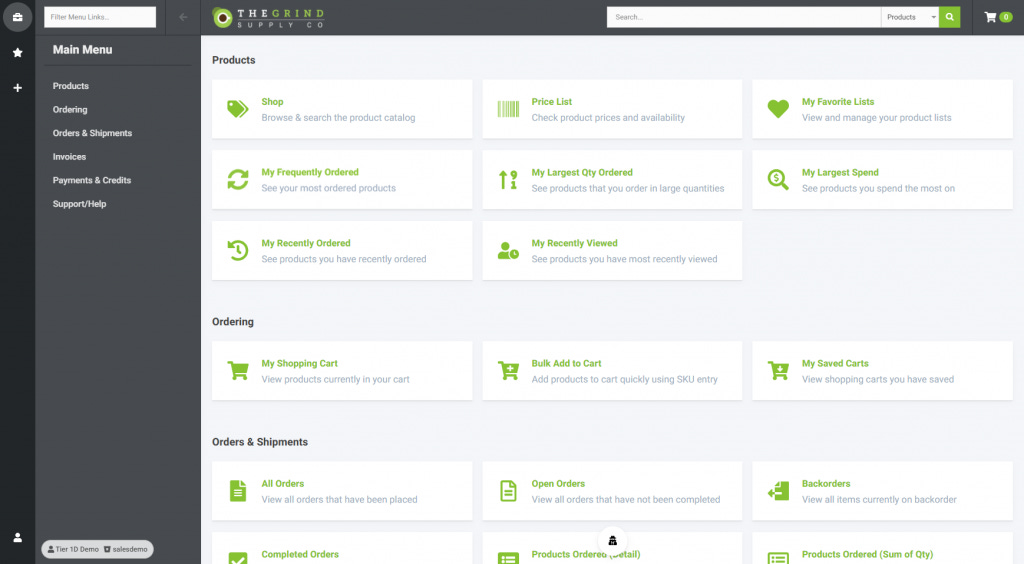
As KBMax noted, "In the modern B2B world, buyers are increasingly seeking to minimize their dealings with sales reps and are looking for ways to self-serve. This trend is particularly evident among Millennials and has been further accelerated by COVID-19."
Visual Configuration and Augmented Reality
Visual configuration and augmented reality have transformed the user experience of guided selling through CPQ. According to KBMax, "Augmented reality (AR) technology takes 3D product visualization and configuration to another level. With AR, customers can visualize products in their real-world environment, which creates a more captivating and persuasive experience."
Key advancements in visual configuration include:
3D Product Visualization: Modern CPQ systems allow customers to view configurable products in 3D, rotating and zooming to examine details from all angles.
Augmented Reality Placement: As KBMax explained, "AR-enabled CPQ can automatically validate product fit by detecting surfaces, measuring spaces, and understanding spatial relationships."
Virtual Reality Showrooms: According to KBMax, "AR (augmented reality) and VR (virtual reality) hold the key to providing an immersive buying experience to buyers, wherever they're situated. Manufacturers of complex, configurable products can create virtual showrooms and let buyers interact with products before they've even been manufactured."
Real-Time Configuration Updates: Visual representations update in real-time as customers modify configurations, providing immediate feedback on how changes affect appearance and functionality.
Photorealistic Rendering: Advanced CPQ systems can generate photorealistic renderings of configured products, helping customers visualize the final result with accurate colors, materials, and finishes.
As Epicor noted, "Customers can view a 3D model of their configured product integrated into the real-world environment rather than relying on imagination. Customers feel confident knowing that what they see digitally reflects the actual customized product they will receive."
Personalization and Adaptive Interfaces
Personalization and adaptive interfaces have become key features of modern CPQ user experiences. According to Sirocco Group, "As we look ahead to 2025 and beyond, the evolution of CPQ tools is poised to accelerate. Personalization driven by AI will reach new heights, allowing businesses to not only understand what customers want but also uncover the underlying reasons behind their preferences for specific configurations or pricing models."
Key aspects of personalization in CPQ user experiences include:
Role-Based Interfaces: Modern CPQ systems adapt their interfaces based on the user's role, showing different options and information to sales representatives, customers, and approvers.
Personalized Recommendations: As PROS explained, "When powered by AI, CPQ enables businesses to deliver fast, tailored, and more personalized offers for every selling interaction, across all channels. A CPQ solution fueled with AI-powered price recommendations can surface insights and analytics about market and buying behaviors and create offers with the right product mix and price point."
Adaptive Workflows: CPQ systems can adjust their workflows based on the complexity of the configuration, product type, customer segment, or other factors.
Contextual Help and Guidance: Modern interfaces provide contextual assistance based on the user's actions and potential points of confusion.
Preference Remembering: Advanced systems remember user preferences and previous configurations, streamlining the process for returning customers.
As Infogain noted, "By analyzing customer preferences, buying patterns, and historical data – we are enabling businesses to deliver personalized recommendations. Combined with dynamic, real-time configuration adjustments, these tailored suggestions reduce errors and improve the overall customer experience."
Collaborative Configuration Capabilities
Collaborative configuration capabilities have emerged as an important feature of modern CPQ systems, particularly for complex B2B purchases that involve multiple stakeholders. According to PROS, "By enabling real-time interactions between buyers and sellers and allowing customers to explore and select the products they need through self-service portals, businesses can use their CPQ solution to allow closer collaboration with sales experts and synchronization of quote changes in real time."
Key aspects of collaborative configuration include:
Shared Configuration Sessions: Modern CPQ systems allow multiple users to view and modify configurations simultaneously, with real-time updates visible to all participants.
Role-Based Permissions: Different stakeholders can be granted different levels of access, allowing some to view configurations while others can modify them.
Communication Tools: Integrated chat, commenting, and annotation features enable discussions about specific aspects of a configuration.
Version Control: The ability to save and compare different configuration versions helps teams evaluate alternatives and reach consensus.
Approval Workflows: Structured approval processes ensure that all necessary stakeholders review and approve configurations before quotes are finalized.
As KBMax predicted, "Looking ahead, AR-enabled CPQ is just the beginning of a broader transformation in B2B digital commerce. As mixed reality technologies mature, we'll likely see the emergence of collaborative configuration spaces where multiple stakeholders can simultaneously interact with virtual products."
Implementation Challenges and Best Practices
Implementing guided selling through CPQ technology presents significant challenges that extend beyond technical considerations to encompass organizational change management, data governance, and user adoption.
Change Management Strategies
Change management has emerged as one of the most critical factors in successful CPQ implementations. According to NeuraFlash, "CPQ implementations require more than just technical setup - they need comprehensive organizational change management."
Effective change management strategies for CPQ implementation include:
Executive Sponsorship: As NeuraFlash emphasized, "Without strong executive sponsorship, CPQ projects may struggle to secure buy-in from across the organization and face challenges in overcoming resistance to change. It's imperative for executives to recognize the strategic importance of CPQ and actively support its implementation by providing leadership, resources, along with clear and often communication to ensure alignment with broader business objectives."
Stakeholder Engagement: According to Owen Sweeney, "It is important that stakeholders who will be impacted by new tooling have input into key design decisions. This drives employee engagement and adoption and, equally important, can produce a functional design that is more fit for purpose."
Clear Communication of Benefits: As Owen Sweeney advised, "Explain to your sales and service people, in their own terms, how the new CPQ experience will be better. At a macro level, CPQ can result in increased speed to quote, improved efficiency (with manual tasks becoming automated workflows), more accuracy and consistency in lead-to-cash, and access to real-time data to drive decisions."
Comprehensive Training: According to Owen Sweeney, "Support your CPQ transformation with a comprehensive and engaging training curriculum. The training should be delivered to end-users using a variety of engagement tools and should not be a point in time exercise as different teams interact the system at different frequencies."
Continuous Engagement: As Centric Consulting noted, "Effective technology change management isn't a one-time task — it's a continuous effort before, during, and after your Salesforce launch. The goal is to empower employees to excel in their new environment from day one and beyond."
Organizations that effectively manage change during CPQ implementation can achieve significantly better results. As Centric Consulting observed, "Organizations with effective change management are six times more likely to succeed in technology transformations."
Data Integration and Quality Challenges
Data integration and quality present significant challenges in CPQ implementation. According to CPQ.se, "Implementing an omnichannel strategy is akin to orchestrating a symphony – every note must be in harmony. However, technical issues such as data synchronization, system compatibility, and ensuring real-time updates can easily disrupt this harmony."
Key challenges and best practices related to data integration and quality include:
Product Data Management: Establishing a single source of truth for product information, including specifications, pricing, and configuration rules.
Customer Data Integration: Ensuring that customer information from CRM systems is accurately synchronized with the CPQ platform.
Pricing Data Governance: Implementing clear processes for managing and updating pricing information, including discounts, promotions, and special pricing agreements.
System Integration Architecture: As PROS noted, "Modern CPQ solutions are becoming increasingly 'agnostic', offering full integration capabilities with multiple back-end systems and pre-built connectors."
Data Validation and Cleansing: Implementing processes to identify and correct data quality issues before they impact the CPQ system.
As Whatfix observed, "Integration ensures that pricing, quoting, billing, and invoicing data are always accurate and up-to-date, creating a seamless flow of information across departments."
Organizations that effectively address data integration and quality challenges can achieve significant benefits. As CPQ.se explained, "CPQ comes into the picture. Known for its robustness in handling complex product configurations, CPQ can seamlessly integrate with existing systems, ensuring that data flows smoothly across all channels."
Technical Implementation Considerations
Technical implementation of CPQ systems presents several challenges and considerations. According to NeuraFlash, "There is a reason why CPQ Specialists are so in demand, and that's because CPQ can be a daunting task to set up for an organization. Between product and bundle setup, to pricing and discounting rules, the effort to get CPQ working just right for you can be a long and tedious one."
Key technical considerations for CPQ implementation include:
Platform Selection: Choosing the right CPQ platform based on specific business requirements, existing technology stack, and future scalability needs.
Configuration Complexity: Determining the appropriate level of configuration complexity to balance flexibility with usability.
Integration Architecture: As the IDC MarketScape report noted, "The market is trending towards modular and microservices-based architectures that support complex configurations, dynamic pricing, and improved self-service capabilities."
Performance Optimization: Ensuring that the CPQ system can handle the expected volume of configurations and quotes with acceptable response times.
Security and Compliance: Implementing appropriate security controls and compliance measures, particularly for industries with specific regulatory requirements.
As NetSuite advised, "Regularly evaluate the CPQ system to find opportunities for enhancement and optimization. Continue to monitor emerging technologies, such as predictive tools powered by artificial intelligence, that can further automate complex pricing decisions and product configurations."
Organizations that effectively address technical implementation considerations can achieve significant benefits. As Minuscule Technologies noted, "The implementation process requires minimal effort from end users or administrators. The application can be quickly deployed across multiple systems, platforms, and devices, allowing users to conveniently access it securely from almost any location."
User Adoption Strategies
User adoption is a critical factor in the success of CPQ implementations. According to NeuraFlash, "Sales team resistance is a critical barrier to CPQ adoption, often stemming from fear of technology complexity or job displacement."
Effective strategies for promoting user adoption include:
Intuitive User Interface: As Zaelab advised, "Your omnichannel CPQ experience is only as intuitive as its user interface (UI). Manufacturers need to ensure that CPQ experiences are accessible and delightful across all channels. By embracing foundational UI principles like responsive design, loading performance, and being open to user testing and feedback, manufacturers can streamline product configuration and quoting through a user-friendly design, reducing the risk of customer frustration and errors."
Role-Based Training: According to Whatfix, "Each team member will require personalized, role-based training to ensure they can efficiently handle their specific tasks—whether it's creating quotes, configuring products, or managing pricing rules."
Change Champions: Identifying and empowering influential users who can advocate for the CPQ system and help their colleagues adopt it.
Continuous Support: As Whatfix noted, "Ongoing maintenance and strong end-user support are crucial to ensuring long-term success with Salesforce CPQ. It's not just about getting the system up and running—it's about optimizing it and ensuring your team can use it effectively daily."
Measuring and Celebrating Success: Tracking adoption metrics and recognizing users who successfully adopt the CPQ system.
As Relay observed, "Engaging employees in the change process can significantly reduce resistance. Before implementing changes, collect their input and involve them in the decision-making process. Recognize and reward employees who actively participate in the transition."
Organizations that effectively promote user adoption can achieve significant benefits. As Relay reported, "Organizations can achieve significant financial advantages through effective change management. A 21% rise in profits has been linked to employee engagement during organizational change management processes."
Phased Implementation Approaches
Phased implementation approaches have proven effective for managing the complexity of CPQ projects. According to Relay, "Phased implementation and incremental adoption can significantly reduce technological transition friction."
Key considerations for phased implementation include:
Prioritization of Capabilities: Identifying the most critical CPQ capabilities to implement first, based on business impact and implementation complexity.
Pilot Programs: As Owen Sweeney suggested, "Pilot programs and early demonstrations of the CPQ tool can help users understand its benefits and provide feedback."
Incremental Expansion: Starting with a limited scope (e.g., specific product lines or sales channels) and gradually expanding to cover the entire product portfolio and sales organization.
Continuous Improvement: Treating CPQ implementation as an ongoing process rather than a one-time project, with regular evaluations and enhancements.
Feedback Loops: Establishing mechanisms to collect user feedback and incorporate it into subsequent implementation phases.
As Logik.io advised, "We have seen that our clients that have the most advanced roadmaps to incorporate all the new features that are coming up, that are flexible and quick to change, see the most return of their investment."
Organizations that adopt phased implementation approaches can manage risk more effectively and achieve better long-term results. As Whatfix suggested, "Whether you're considering buying Salesforce, working on implementing it, or have used it for years, building a Salesforce adoption strategy can enable teams to maximize the value of its CRM investments and use its technology to drive outcomes."
Future Trajectory (2025-2027)
The future of guided selling enhanced by CPQ technology promises even deeper integration of artificial intelligence, immersive visualization technologies, and conversational interfaces.
AI and Machine Learning Advancements
The next two years will see significant advancements in AI and machine learning capabilities within CPQ systems. According to servicePath, "Looking ahead to 2026 and beyond, we're seeing several emerging trends that will further transform industry-specific CPQ implementations: Deeper AI integration, AR/VR visualization, IoT-enabled CPQ, and cloud-based hosting that provides easy flexibility and scalability."
Key AI and machine learning advancements expected in 2025-2027 include:
Autonomous Configuration: CPQ systems will increasingly be able to automatically generate optimal configurations based on minimal input, using AI to infer customer needs and preferences.
Predictive Analytics: As Minuscule Technologies noted, "CPQ helps businesses apply predictive analytics algorithms and deliver accurate predictions. This helps organizations shift their focus from reactive to proactive processes."
Natural Language Understanding: According to Shaip, "We are witnessing Transformers models like GPT-4 and BERT are achieving excellent accuracy and in 2025, they will surely reach new dynamics of possibilities. In our testing, we saw that these models can now handle niche tasks like drafting legal contracts and analyzing medical records of patients with close to human-like precision."
Emotion Detection: As Shaip reported, "Modern AI models now go beyond merely identifying positive or negative sentiments—they can detect a wide range of emotions such as anger, joy, frustration, and more. This capability allows for a deeper understanding of human interactions."
Multilingual Capabilities: According to Shaip, "As of now, NLP systems can handle 300+ languages and with initiatives like Google's Universal Speech Model (USM), the aim is to cover 1000 languages. Currently, USM supports 400+ languages including some low-resource languages like Amharic and Assamese, enhancing accessibility in regions like Africa and South Asia."
These advancements will enable more sophisticated guided selling experiences that adapt to customer needs in real-time and provide increasingly personalized recommendations.
Immersive Visualization Technologies
Immersive visualization technologies will continue to transform the guided selling experience. According to Sirocco Group, "Augmented reality (AR) will also play a significant role in shaping the future of CPQ. Already, customers can visualise product configurations in real-time, whether it's machinery on a factory floor or furniture in a living room. In the coming years, AR will enhance this capability, providing immersive, real-time experiences that bridge the gap between digital and physical worlds, improving customer decision-making and driving sales."
Key developments in immersive visualization expected in 2025-2027 include:
Advanced AR Integration: CPQ systems will offer more sophisticated AR capabilities, including improved object recognition, spatial mapping, and real-time physics simulations.
Virtual Reality Showrooms: As KBMax explained, "AR (augmented reality) and VR (virtual reality) hold the key to providing an immersive buying experience to buyers, wherever they're situated. Manufacturers of complex, configurable products can create virtual showrooms and let buyers interact with products before they've even been manufactured."
Digital Twins: CPQ systems will increasingly incorporate digital twin technology, allowing customers to interact with virtual replicas of physical products that accurately simulate functionality and performance.
Collaborative Virtual Spaces: As KBMax predicted, "Looking ahead, AR-enabled CPQ is just the beginning of a broader transformation in B2B digital commerce. As mixed reality technologies mature, we'll likely see the emergence of collaborative configuration spaces where multiple stakeholders can simultaneously interact with virtual products."
Haptic Feedback: Advanced visualization technologies may incorporate haptic feedback, allowing customers to "feel" virtual products and experience textures and physical properties.
These immersive visualization technologies will enable more engaging and informative guided selling experiences, particularly for complex products where visual representation is crucial to understanding configuration options.
Conversational and Voice-Driven Interfaces
Conversational and voice-driven interfaces will become increasingly important in guided selling through CPQ. According to GlobeNewswire, "DealDesk AI represents a significant advancement in conversational AI for CPQ, allowing sales teams to create quotes using natural language processing."
Key developments in conversational interfaces expected in 2025-2027 include:
Voice Commerce Integration: According to Shaip, "Voice commerce is emerging, with 47.3 million U.S. adults having access to smart speakers and 11.5% using them for purchases." This trend will extend to CPQ, enabling voice-driven configuration and quoting.
Natural Language Configuration: As Expedite Commerce explained, "Sales reps can leverage Expedite AI to choose products individually, in bulk, or via natural language commands. Use conversational prompts to simplify complex configurations, quickly find and add the right products to customer quotes." This capability will become more sophisticated and widely available.
Conversational Guided Selling: CPQ systems will increasingly use conversational interfaces to guide customers through the configuration process, asking questions and making recommendations in a natural, dialogue-based format.
Multilingual Voice Support: As Shaip noted, NLP systems are expanding to support hundreds of languages, enabling voice-driven CPQ interactions across global markets.
Emotion-Aware Interactions: Advanced conversational interfaces will detect and respond to emotional cues, adapting their tone and recommendations based on customer sentiment.
These conversational interfaces will make CPQ systems more accessible and intuitive, reducing the learning curve for both sales representatives and customers.
Integration with Emerging Technologies
CPQ systems will increasingly integrate with emerging technologies to enhance guided selling capabilities. According to Logik.io, "IoT-enabled CPQ solutions can gather data from connected devices, sensors, and machines to inform product configurations, pricing decisions, and quoting strategies. For example, in the manufacturing sector, IoT sensors embedded in machinery can transmit usage data to CPQ systems, enabling predictive maintenance and dynamic pricing based on equipment performance."
Key emerging technology integrations expected in 2025-2027 include:
Internet of Things (IoT): As servicePath predicted, "IoT-enabled CPQ" will become more prevalent, allowing for real-time data from connected devices to inform configuration and pricing decisions.
Blockchain Technology: According to Logik.io, "Blockchain technology has potential to introduce unprecedented transparency and traceability in pricing and quoting processes."
5G Connectivity: The widespread adoption of 5G will enable more responsive and data-rich CPQ experiences, particularly for mobile and AR/VR applications.
Edge Computing: Processing configuration data closer to the point of interaction will reduce latency and enable more responsive guided selling experiences, particularly for complex visualizations.
Quantum Computing: While still emerging, quantum computing may begin to impact CPQ by enabling more complex optimization algorithms for product configuration and pricing.
These technology integrations will extend the capabilities of CPQ systems beyond traditional boundaries, enabling new use cases and more sophisticated guided selling experiences.
Evolution of Business Models
The evolution of CPQ technology will enable and drive new business models. According to Logik.io, "Subscription-based pricing models are increasingly being integrated into CPQ solutions to support flexible revenue management."
Key business model evolutions expected in 2025-2027 include:
Outcome-Based Pricing: CPQ systems will increasingly support pricing models based on customer outcomes rather than product features, requiring sophisticated tracking and measurement capabilities.
Subscription and Usage-Based Models: As Logik.io noted, subscription-based pricing models will become more prevalent, requiring CPQ systems to handle recurring billing, usage tracking, and subscription management.
Marketplace Integration: CPQ systems will increasingly integrate with digital marketplaces, enabling guided selling across ecosystem partners and third-party offerings.
Sustainability-Driven Configurations: According to Logik.io, "ESG (Environmental, Social, and Governance) criteria are being incorporated into CPQ to align pricing with sustainability and ethical considerations."
Self-Service Product Creation: Advanced CPQ systems may enable customers to not only configure existing products but also participate in the creation of entirely new product variants.
These business model evolutions will require CPQ systems to become more flexible and adaptable, supporting a wider range of pricing and delivery models.
Predictive and Prescriptive Selling
Predictive and prescriptive selling capabilities will become more sophisticated in CPQ systems. According to Sirocco Group, "As we look ahead to 2025 and beyond, the evolution of CPQ tools is poised to accelerate. Personalisation driven by AI will reach new heights, allowing businesses to not only understand what customers want but also uncover the underlying reasons behind their preferences for specific configurations or pricing models. This deeper level of insight will empower companies to deliver highly tailored experiences, strengthening customer relationships and increasing retention."
Key developments in predictive and prescriptive selling expected in 2025-2027 include:
Intent Prediction: CPQ systems will increasingly predict customer intent based on behavior patterns, allowing for more proactive guided selling approaches.
Next Best Action Recommendations: Advanced AI will provide sales representatives with real-time guidance on the most effective next steps in the sales process.
Autonomous Negotiation: Some CPQ systems may incorporate AI agents capable of conducting basic negotiations with customers, adjusting pricing and configuration within predefined parameters.
Predictive Configuration: As Epicor explained, "Generative design is a revolutionary approach that harnesses the power of AI to explore a vast array of design possibilities. The process starts with users defining design goals, constraints, and parameters." This capability will become more sophisticated, automatically generating optimal configurations based on customer requirements.
Lifetime Value Optimization: CPQ systems will increasingly optimize configurations and pricing based on predicted customer lifetime value rather than immediate transaction value.
These predictive and prescriptive capabilities will enable more proactive and strategic guided selling approaches, moving beyond reactive configuration to anticipatory recommendation.
Conclusion and Recommendations
Guided selling enhanced by CPQ technology represents a transformative approach to sales that combines the best of human expertise with advanced technological capabilities. Organizations that successfully implement these solutions can achieve significant improvements in sales efficiency, customer experience, and business outcomes.
Key Findings Summary
This comprehensive analysis of guided selling techniques enhanced by CPQ technology has revealed several key findings:
Transformative Evolution: Guided selling with CPQ has evolved from basic configuration tools to sophisticated, AI-driven systems that orchestrate the entire sales process. As PROS noted, "With significant advances in just the last few years, CPQ has become the go-to technology for businesses to modernize their sales processes—reducing errors, accelerating sales cycle, and enhancing the customer experience with quick, personalized quotes."
AI-Driven Personalization: Artificial intelligence has transformed CPQ capabilities, enabling more personalized and effective guided selling experiences. According to iQuoteXpress, "AI isn't 'added' to CPQ, nor does it operate outside the app. It's embedded with AI-powered CPQ applications leveraging machine learning algorithms to automate various aspects of the quoting process."
Omnichannel Integration: Modern CPQ systems support seamless omnichannel experiences, enabling consistent guided selling across all customer touchpoints. As PROS observed, "Hybrid selling is set to become a dominant B2B sales strategy, and CPQ facilitates this approach by bridging the gap between direct sales and eCommerce, providing customers with an easy, accurate, and consistent buying experience across sales channels."
Immersive Visualization: Advanced visualization technologies, including 3D, augmented reality, and virtual reality, have enhanced the guided selling experience. According to servicePath, "Modern CPQ platforms now offer immersive 3D product visualization and even AR functionality, allowing customers to see exactly what they're configuring in real-time."
Measurable Business Impact: Organizations implementing guided selling through CPQ have achieved significant business outcomes, including increased deal sizes, reduced sales cycles, and improved quote accuracy. As CPQ Integrations reported, "CPQ provides an average return of $6.22 for every $1 invested, representing over a 500% return on investment."
Industry Specialization: The CPQ market has seen increasing specialization, with vendors developing industry-specific solutions that address the unique requirements of different sectors. According to Vloxq, "As the CPQ market continues to grow, we're seeing the emergence of niche CPQ tools designed to meet the specific needs of different industries."
Implementation Challenges: Successful CPQ implementation requires addressing change management, data integration, and user adoption challenges. As NeuraFlash noted, "CPQ implementations require more than just technical setup - they need comprehensive organizational change management."
Future Innovation: The future of guided selling with CPQ will be shaped by continued advancements in AI, immersive visualization, conversational interfaces, and integration with emerging technologies. According to servicePath, "Looking ahead to 2026 and beyond, we're seeing several emerging trends that will further transform industry-specific CPQ implementations: Deeper AI integration, AR/VR visualization, IoT-enabled CPQ, and cloud-based hosting that provides easy flexibility and scalability."
Strategic Recommendations
Based on these findings, organizations looking to implement or enhance guided selling through CPQ should consider the following strategic recommendations:
Adopt a Jobs-to-be-Done Perspective: Focus on the fundamental tasks that customers and sales representatives are trying to accomplish, designing guided selling experiences that address these core needs rather than simply showcasing product features.
Prioritize User Experience: Invest in intuitive, engaging user experiences for both sales representatives and customers. As Zaelab advised, "Your omnichannel CPQ experience is only as intuitive as its user interface (UI). Manufacturers need to ensure that CPQ experiences are accessible and delightful across all channels."
Leverage AI Capabilities: Embrace the transformative potential of AI in guided selling, from personalized recommendations to predictive analytics and natural language processing. According to PROS, "When powered by AI, CPQ enables businesses to deliver fast, tailored, and more personalized offers for every selling interaction, across all channels."
Implement Phased Approaches: Adopt phased implementation strategies that balance ambition with practicality. As Relay advised, "Phased implementation and incremental adoption can significantly reduce technological transition friction."
Invest in Change Management: Recognize that successful CPQ implementation requires comprehensive change management. According to Centric Consulting, "Organizations with effective change management are six times more likely to succeed in technology transformations."
Ensure Seamless Integration: Prioritize integration with existing business systems, creating a unified experience across the entire customer journey. As PROS noted, "One of the most important trends today is to integrate it all—CRMs, ERPs, customer-facing portals, and eCommerce platforms—to provide smarter decision-making capabilities and a unified experience for customers, partners, and sales teams."
Measure and Optimize: Establish clear metrics for measuring the business impact of guided selling through CPQ, and continuously optimize based on these metrics. As Simplus advised, "Well-crafted KPIs are the GPS on your travels towards your company goals, but they are only effective when fed accurate data from well-adopted systems, mapped against a desired destination, and observed by users willing to take course-correcting action."
Prepare for Future Evolution: Develop a roadmap for incorporating emerging technologies and capabilities into guided selling approaches. As Logik.io advised, "We have seen that our clients that have the most advanced roadmaps to incorporate all the new features that are coming up, that are flexible and quick to change, see the most return of their investment."
By following these recommendations, organizations can maximize the value of guided selling through CPQ, creating more effective sales processes, more engaging customer experiences, and more sustainable competitive advantage.
Final Thoughts
Guided selling enhanced by CPQ technology represents one of the most significant opportunities for sales transformation in the current business landscape. By combining the best of human expertise with advanced technological capabilities, organizations can create guided selling experiences that are more personalized, efficient, and effective than ever before.
As Epicor eloquently stated, "Ultimately, the goal of Epicor CPQ is to put the power of creation into the hands of our users. By combining human creativity with machine intelligence, we unlock endless possibilities for the personalized products and streamlined solutions we can build together."
This vision of collaborative creation—bringing together human insight and technological capability—represents the true promise of guided selling enhanced by CPQ. Organizations that embrace this vision and implement it effectively will be well-positioned to thrive in an increasingly digital and customer-centric business environment.
This report was created by the Practical JTBD Deep Research Agent. Copyright ©️ 2025
Join our community of forward-thinking innovators to learn what customers really want at PJTBD Community.











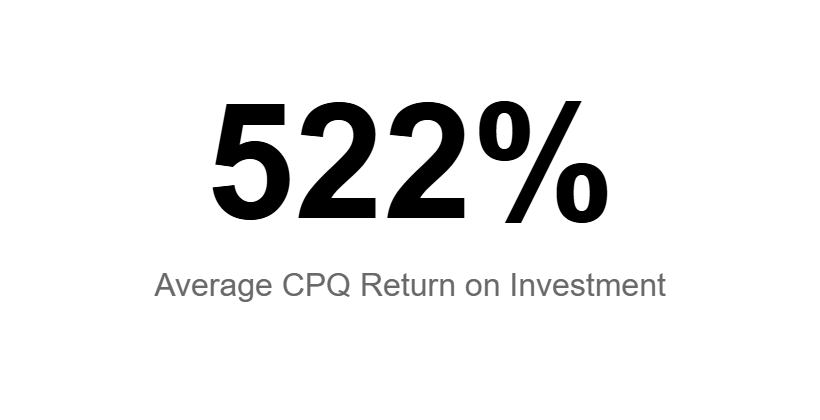






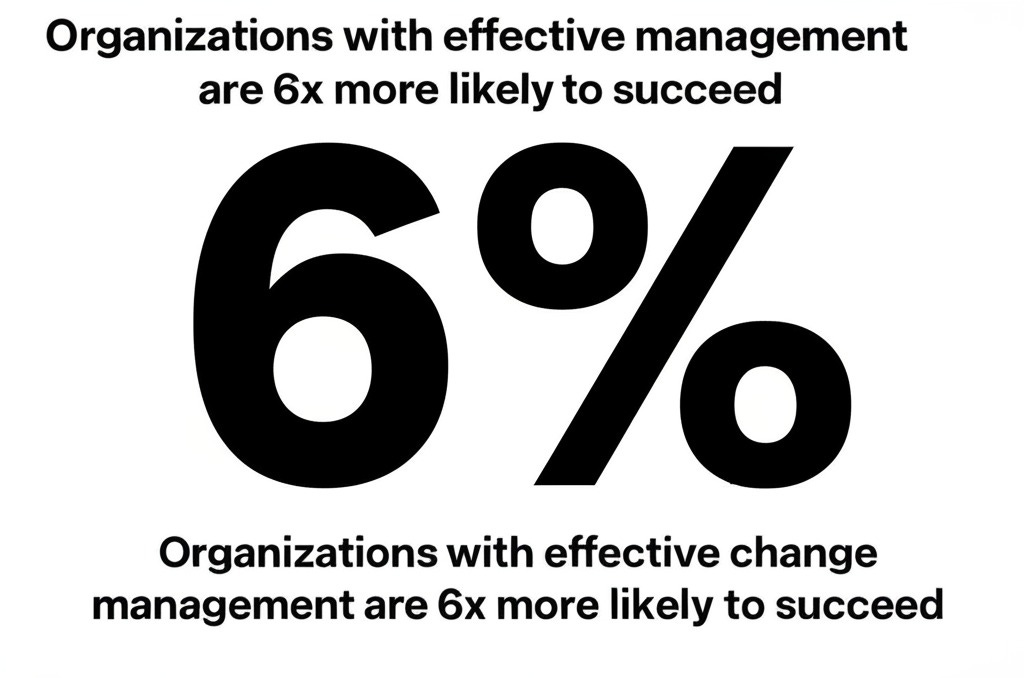

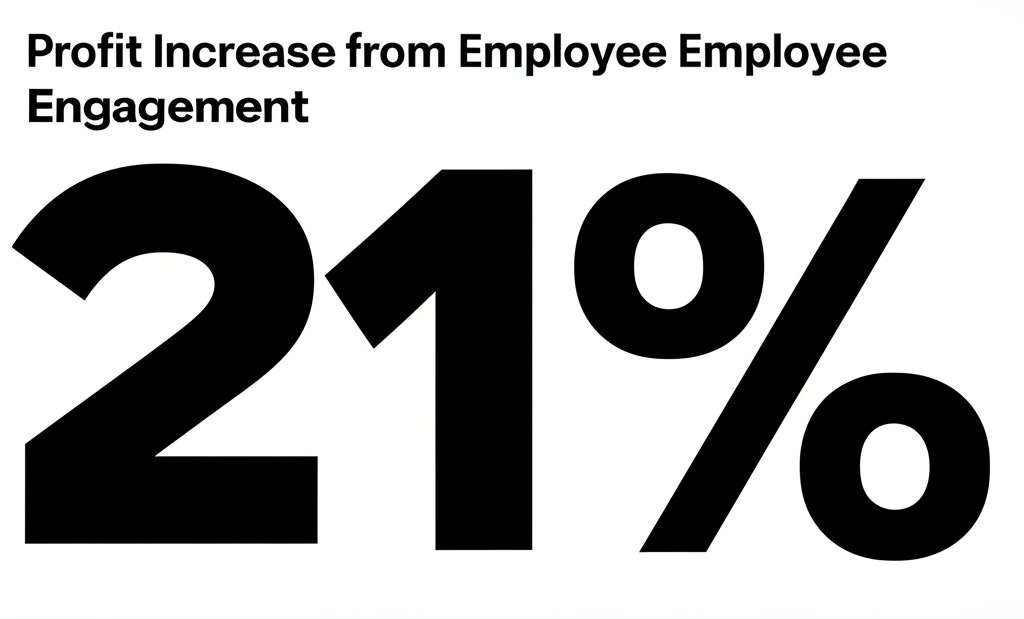
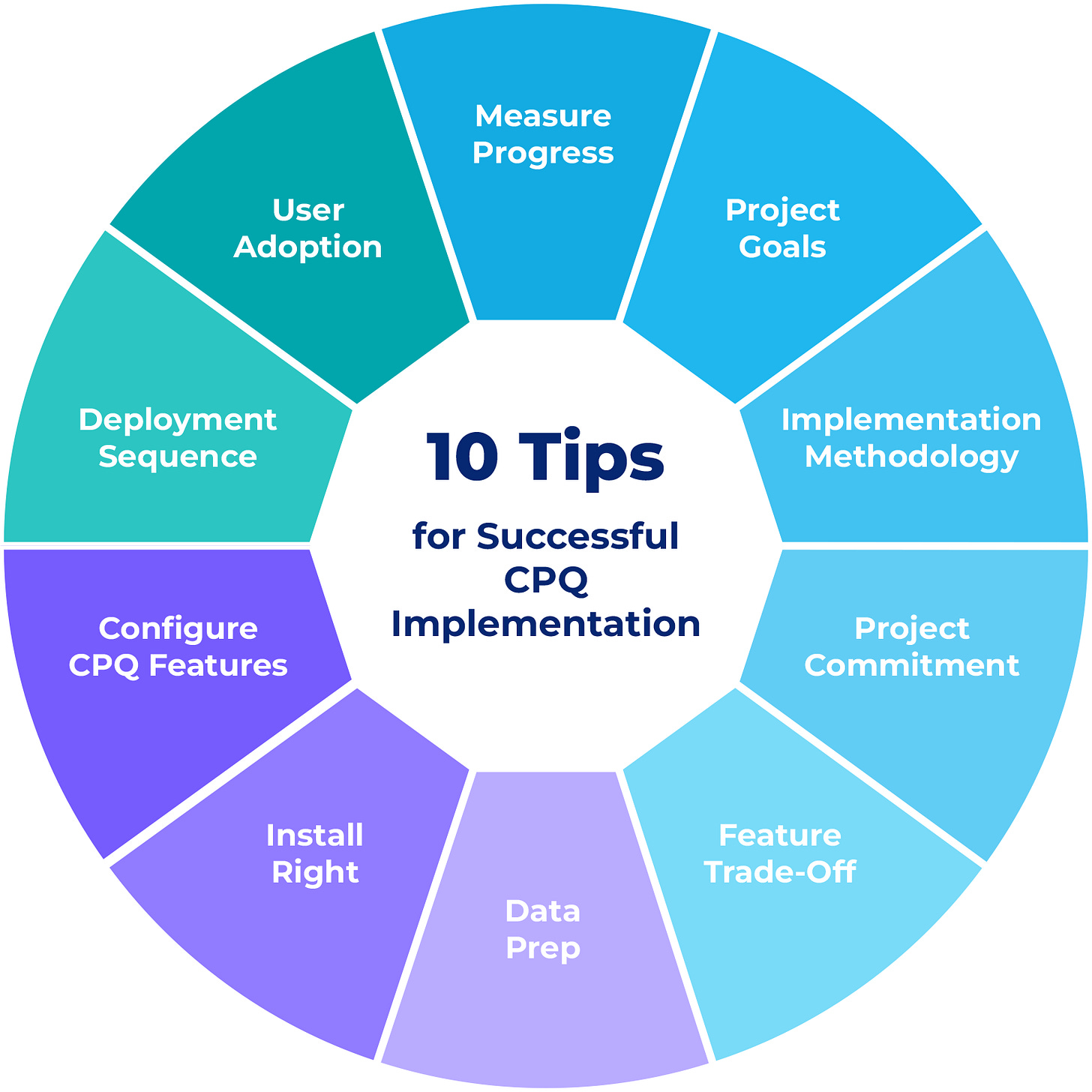
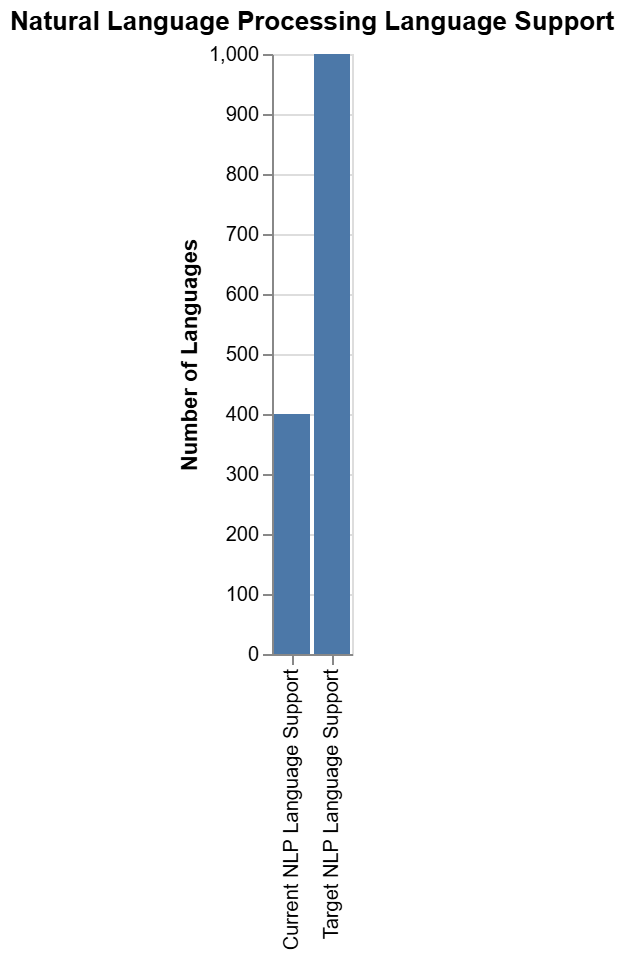

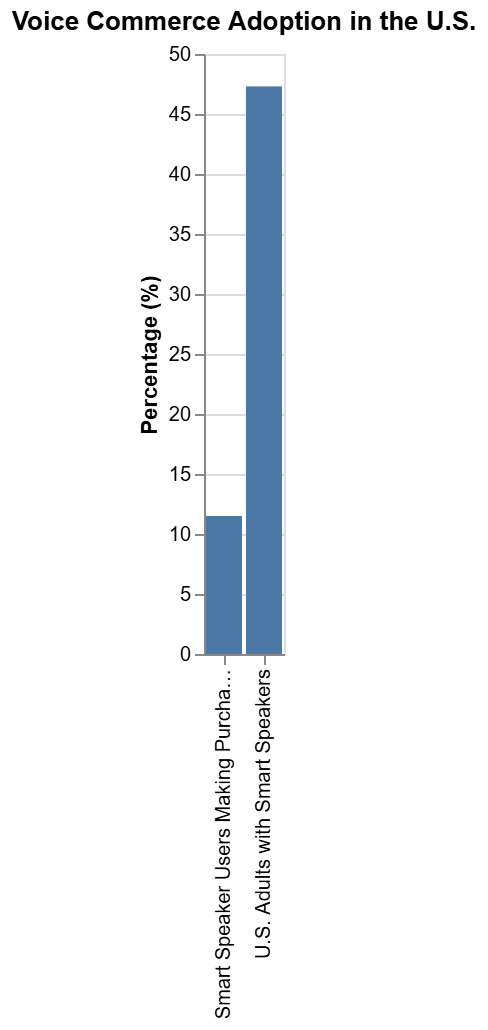

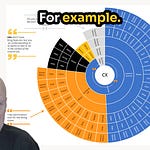

Share this post